Phonics Teaching Resources
Make teaching phonics easy with printable phonics worksheets, activities, games and more designed for primary teachers.
This collection of Australian curriculum-aligned teaching resources has been carefully reviewed by our expert teaching team to make sure every resource is classroom-ready — so we can make your lesson planning easier!
New to teaching phonics, or just looking for new ways to engage your students? Read on for a primer from our teacher team!
What Is Phonics?
You've likely heard the word 'phonics' thousands of times throughout your own education and maybe on one of those old as from the '90s. But what is phonics, exactly?
Phonics is technically defined as the systematic instruction of the relationships between letters and sounds in written language. But that's a mouthful, isn't it? More simply, phonics is the word we use to refer to the method of teaching reading by focusing on the relationship between written letters and the sounds they represent.
In phonics, kids learn how to decode written words by recognising the sound-symbol correspondence.
Phonics vs. Phonemic Awareness
When we start talking about letters and their sounds, we start to wander into phonemic awareness territory. So what's the difference?
The words phonics and phonemic are similar, and the two concepts are — surprise, surprise — related. But there are key differences.
Phonemic awareness is essentially the ability to identify and manipulate individual sounds — aka phonemes — in spoken language. It's those individual sounds and their correspondence to the letter symbols that can be used by kids to then decode written words.
So students learn to recognise the individual sounds of spoken language (phonemes) and how these sounds can be represented by letters (graphemes) in written language. Then they apply this knowledge to decode written words by understanding the sound-symbol correspondence.
Consider this example:
- Let's say your student can identify the separate sounds in a spoken word such as 'cat' (i.e., /k/ /a/ /t/). That's phonemic awareness.
- Now let's say you're teaching that same student that the letter 'c' represents the /k/ sound and that the letter 'a' represents the /a/ sound, and that these sounds combine to form the word 'cat.' That's phonics!
How to Teach Phonics in Primary School
OK, you probably already know that phonics is all about teaching word recognition via grapheme-phoneme associations and letter-sound correspondences.
It’s a means of teaching early readers the pieces that make up a word so they can blend them together to decode the English language as readers and writers.
But how do you teach it?
In the earliest stages, phonics instruction typically begins with teaching students the most common letter-sound relationships. You start with consonants, then move on to vowels, then consonant blends.
Students then learn to sound out words by decoding the letters and blending the sounds together to form words.

Phonics Vocabulary Terms to Remember
The English language system is one of the hardest to teach and learn, so how do you teach phonics? Let’s start with the phonics vocabulary.
- For starters, there are 26 letters that create approximately 44 phonemes, the word for the individual speech sounds that make up words. Put together, phonemes make words. OK, easy enough, right?
- Well, these phonemes can be written in more than 200 different letter combinations, known as graphemes. Graphemes can be made up of 1 letter (such as 'p' in 'pig'), 2 letters (such as 'gh' in ghost), 3 letters (such as 'igh' in night), or 4 letters (such as 'ough' in rough).
- Then there are digraphs or two letters that work together to make one sound — such as “ph” in graph. But wait, isn’t that a grapheme? Yup, a digraph is a type of grapheme.
- So is a trigraph, trigraphs, aka three letters that work together to make one sound, such as 'dge' in edge.
- And if you’re teaching phonics, you can’t forget dipthongs, the name for a sound that is formed by the combination of two vowels in a single syllable, such as 'ou' in loud.
Most students will spend foundation, year 1 and even year 2 getting a handle on all phonics elements!
- Plus Plan

Secret Code Spelling Worksheet Pack
Have more fun with spelling practice by using a Secret Code Spelling Worksheet!
- Plus Plan

Elkonin Boxes - Word Shapes Worksheets - Year 1
Build early phonics skills with our printable Phonics-Based Elkonin Boxes Word Shapes Worksheets.
- Plus Plan

Flags of the World - Print and Cursive Alphabet Line
Display the alphabet in print or cursive with a unique Flags of the World Alphabet Line.
- Plus Plan

I Spy Alphabet Sounds Mat
Use these ‘I Spy’ Alphabet Sounds Mats to explore the different letter-sound correspondence of the alphabet.
- Free Plan

Alphabet Sounds Puzzle
Dive into letter-sound correspondence with your students using this alphabet sounds puzzle.
- Plus Plan
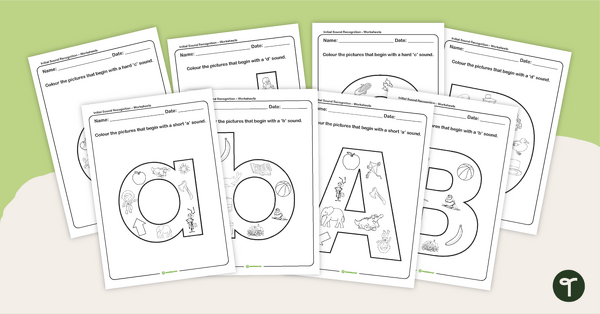
Alphabet Sounds Worksheets
Explore alphabet beginning sounds with this set of alphabet sounds worksheets to develop letter recognition.
- Plus Plan

Colour by Letter Worksheet Pack (SATPIN)
Help students with their recognition of the letters – s,a,t,p,i,n with this colour by letter worksheet pack.
- Plus Plan

Alphabet Bingo Upper and Lowercase Recognition
Give students the opportunity to practise the recognition of lowercase and uppercase letters with this set of alphabet bingo cards.
- Plus Plan

Alphabet Matching Game
Use this alphabet matching game to familiarise your students with the letters of the alphabet and their corresponding sounds.
- Plus Plan

Yes or No? Phonics Sorting Activity
Use this phonics activity to help your students identify the different phonemes that make up a word.
- Plus Plan
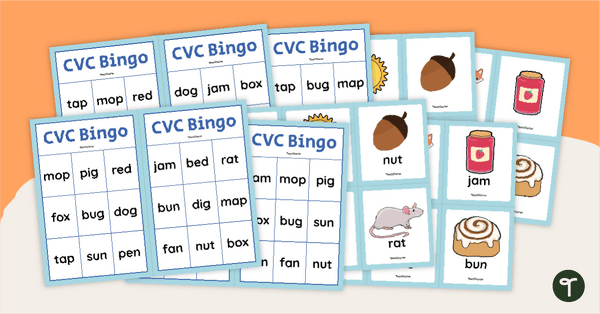
CVC Words Bingo Game
Practise decoding simple CVC words with this set of printable Bingo boards.
- Plus Plan

Printable Early Reader Books - Ocean Animals
Learn about sea life with a printable ocean book for year 1 students.
- Plus Plan
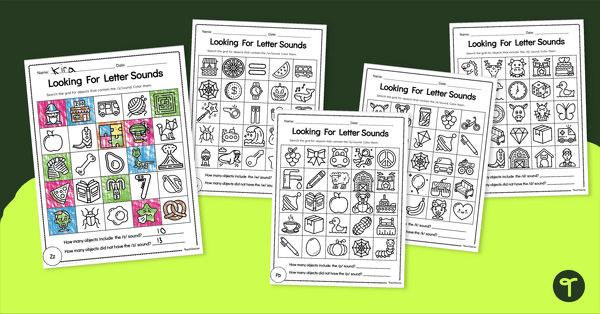
Letter Sound Worksheets - Initial, Medial, and Final Positions
Practise isolating initial, medial, and final letter sounds with a fun set of Letter Sound Worksheets for Year 1.
- Free Plan

Consonant Digraph Cut-and-Paste Worksheets
Reinforce your students' knowledge of digraphs with this set of cut-and-paste worksheets.
- Plus Plan
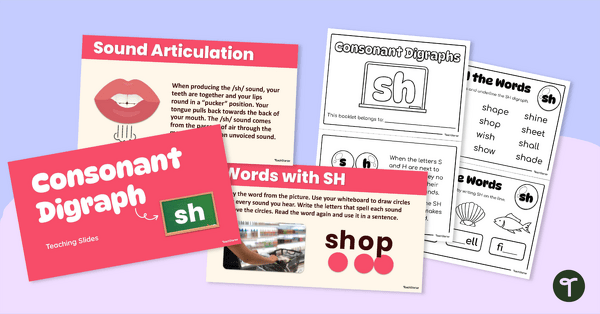
Sh Digraph Lesson Resource Pack
Introduce students to the sh digraph with this set of teaching slides and mini activity book.
- Plus Plan

Ck Digraph Lesson Resource Pack
Introduce students to the ck digraph with this set of teaching slides and mini activity book.
- Plus Plan

Consonant Digraph Sound Wall Cards
Guide students through phonics with these consonant digraph sound wall cards for a classroom display.
- Plus Plan

Ch Digraph Lesson Resource Pack
Introduce students to the ch digraph with this set of teaching slides and mini activity book.
- Plus Plan

Printable Alphabet Colouring Pages
Use printable alphabet colouring pages to boost letter recognition skills.
- Plus Plan

My Alphabet Book - Printable Alphabet Worksheets
Learn the letters of the alphabet and their sounds with printable ABC worksheets
- Plus Plan

The Mystery Door - Decodable Reader (Level 7)
Develop confident, successful readers with this phonics-based, printable decodable book.
- Plus Plan

The Spoilt Royal - Decodable Reader (Level 6)
Develop confident, successful readers with this phonics-based, printable decodable book.
- Plus Plan

Spelling CVCC Words - Worksheets
Develop students’ ability to segment and blend the sounds in CVCC words with this set of differentiated worksheets.
- Free Plan
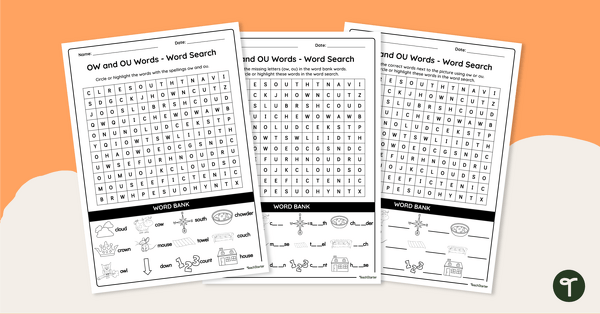
OW and OU Words - Word Search
Explore words containing ‘ow’ and ‘ou’ with this set of differentiated word searches.
- Plus Plan

Dress Up Day - Decodable Reader (Level 3)
Develop confident, successful readers with this phonics-based, printable decodable book.
- Plus Plan
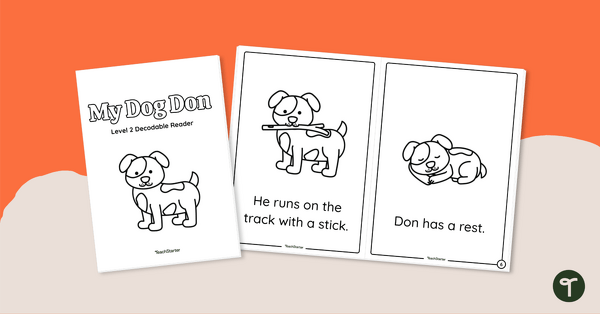
My Dog Don - Decodable Reader (Level 2)
Develop confident, successful readers with this phonics-based, printable decodable book.
- Plus Plan

Dad Sits - Decodable Reader (Level 1)
Develop confident, successful readers with this phonics-based, printable decodable book.
- Plus Plan

No Naps, Nan! - Decodable Reader (Level 1)
Develop confident, successful readers with this phonics-based, printable decodable book.
- Free Plan

Decodable Readers Teacher Support Pack
A set of free supplementary resources to support the implementation of Teach Starter’s series of phonics-based decodable readers.
- Plus Plan

OI Graphemes - SCOOT! Task Cards
Explore words containing graphemes that make the diphthong ‘oi’ with this active classroom game that will get your students moving!
- Free Plan

Silent Letters Worksheets - Read, Find and Colour
Identify silent letters in words with this set of three find and colour worksheets.
- Plus Plan

Which Letter? Poster - K or C
Help your students remember when to use the letter K and when to use the letter C with this colourful classroom poster.